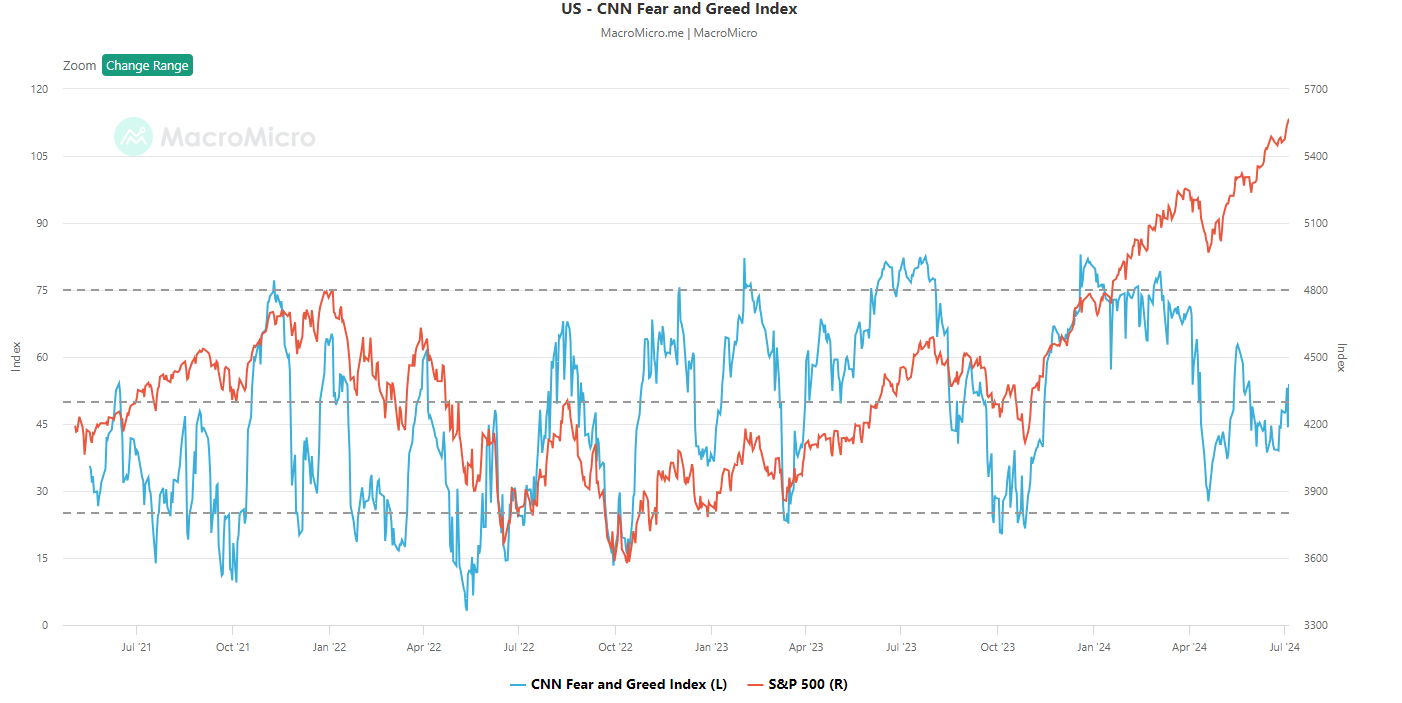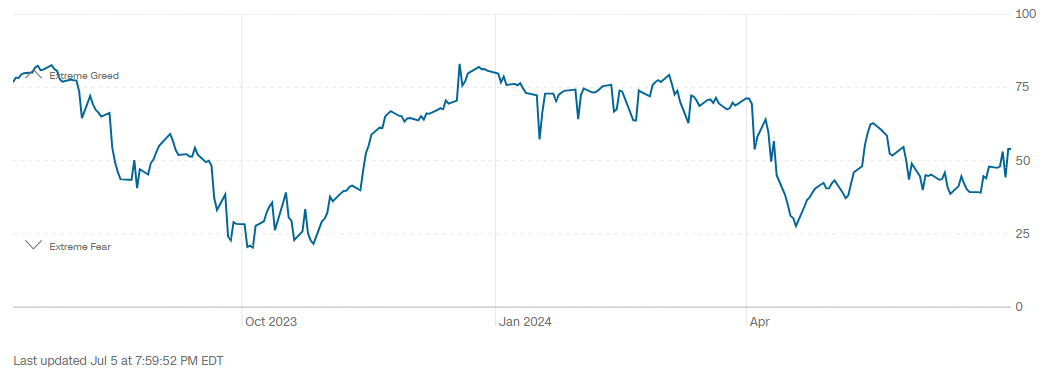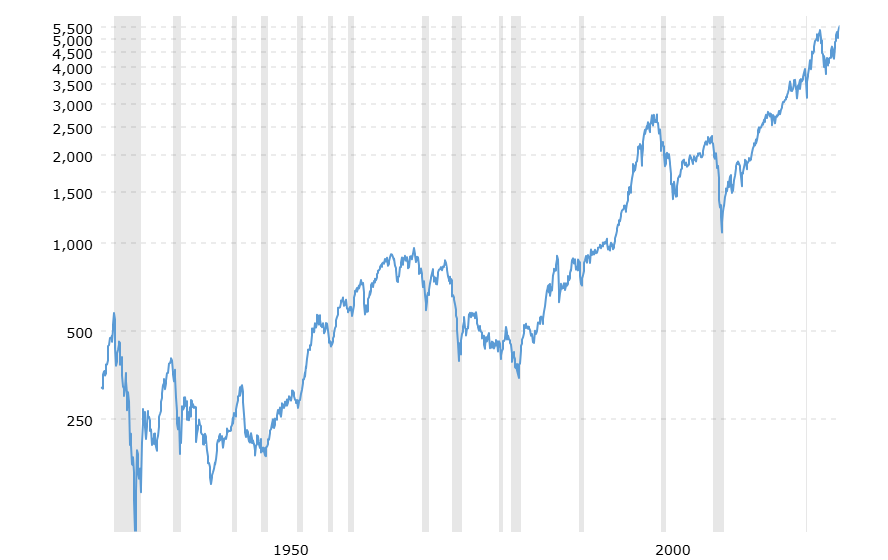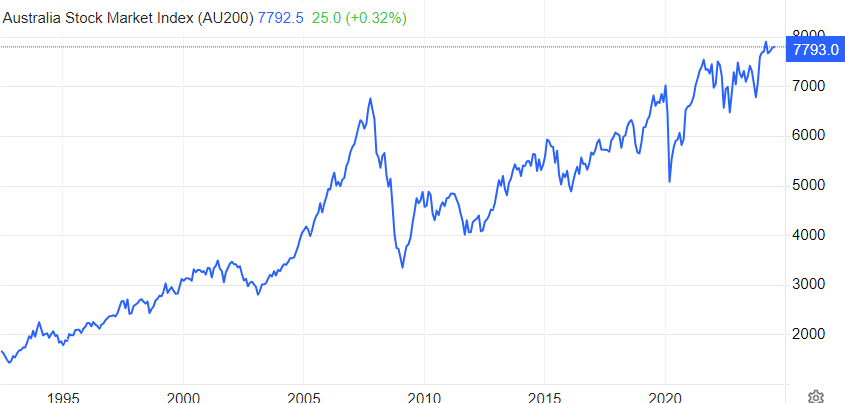Why you shouldn’t fear the market highs
If you’ve heard it once, you’ve heard it a hundred times - Be greedy when others are fearful. But from a psychological standpoint, we only think of applying that to market lows. We don’t always think about what it means when markets are at highs - such as what we’re seeing right now.
The S&P500 is up 26.56% in the past year, closing on all-time highs last week – the reasons for this stellar performance are no secret. The S&P/ASX200 is up 11.68% on the past year – and it’s not that far off all-time highs, closing at 7,822 last Friday compared to a high of 7,896 in late March.
While the past 12-24 months have been fruitful, tougher and more uncertain times are potentially ahead. Some central banks have commenced cutting, while Australia—still struggling with inflation—faces another potential hike.
This uncertainty likely has many investors questioning whether we’ve hit the peak of the cycle and forecasting a downhill slide from here. But is that the right approach, and do you need to fear the highs? I'll explore those questions in the following wire.
Fear and greed driving markets
You may have heard of CNN’s Fear & Greed Index before, which measures market sentiment in the US.
It gauges mood by combining market momentum, stock price strength, stock price breadth, put and call options, junk bond demand, market volatility, and safe haven demand. The assumption is that when the index veers into fear, share prices should start to dip, while greed will see prices rise.
Greed is numbers above 50, fear for numbers below and holds a reasonable correlation to activity, even if you just look over the past few years.

A closer look at the Fear and Greed Index just for the past year is shown below.

The index has remained largely in neutral territory for the past month, though somewhat more slanted towards the fear end. We did see a dip towards extreme fear in mid-April, before a spike into greed in late May. It has trended back to neutral since then.
Where it gets interesting is when you look into the underlying components—both stock price strength and breadth are hitting extreme fear levels, and put and call options are hitting extreme greed. This might suggest that people are concerned about prices and taking a short-term approach to the market to make money.
Safe-haven demand is in greed territory, but then so is junk bond demand. On one hand, this seems contradictory. At a point where bonds are sought over equities for safety, why are investors also seeking junk bonds with a higher risk of default? Perhaps investors are seeking to lock in higher yields ahead of cuts. And perhaps they are taking advantage of better fundamentals across the bond market.
Market volatility is currently in neutral territory, not pushing the dial either way.
It’s not all a guarantee – the fear and greed index is correlation rather than causation, but you wouldn’t necessarily expect the market to nosedive tomorrow, given this sentiment. This would suggest that perhaps the current market highs are not to be feared… yet.
The history of share markets
Another point of view is taking a more data-driven look at markets.
We fear investing in market highs because we might lose money in the next part of the cycle. It’s not wrong, but it’s also not the entire picture – particularly if you are a long-term buy-and-hold investor.
Take an individual stock perspective, for example.
Say you purchased CSL (ASX: CSL) on 31 August 2018 at $227.31/share. To refresh your memory, the S&P/ASX 200 hit decade highs in August, only for the following months to include a Wall St crash and weak Australian GDP data. It finished the year down. By 31 December, your investment in CSL was now worth $185.16/share. Ouch. However, say you sat tight and still hold CSL today, your investment is worth $298.14/share. That’s before we consider the dividends and franking credits you may also have accrued.
It's a testament to looking for quality and solid fundamentals. There’s an added element, though. If you look at historical data, markets have gained over time – a dramatic short-term loss may even out in the long term.
You can see this in the charts below for the S&P/ASX200 and the S&P 500.
The performance of the S&P 500 for the last 90 years

Performance of the ASX/S&P 200 since July 1992

Understandably you might also look at the Australian chart and note that the gains between the GFC and today have not been as significant as those of the S&P 500 – this is your reminder of why diversification across regions and sectors is critical. In any case, both US and Australian charts have gained over time - it's time in the market, not timing the market, that matters, as they say.
You might also find this data compiled by Market Index interesting – between 1900-2021, the Australian share market returned an average of 13.2% pa. There have been 23 negative years in that time – 4 of them in the last 20 years. If you factor 2022’s bloodbath then we’ve had 5 negative years in the last 20 years.
Final thoughts
It’s also worth remembering that humans are notoriously bad at picking market peaks and troughs – everyone from expert to amateur level. The point is that if you’ve done your research and like an investment, believing that markets are at highs is not necessarily a reason not to invest. Poor fundamentals on the other hand…
2 topics
1 stock mentioned

